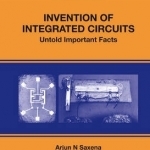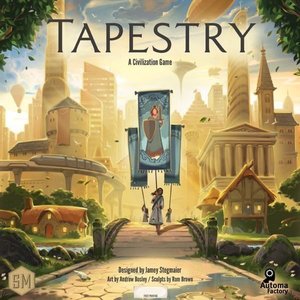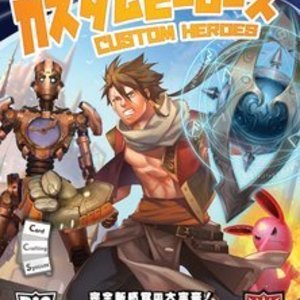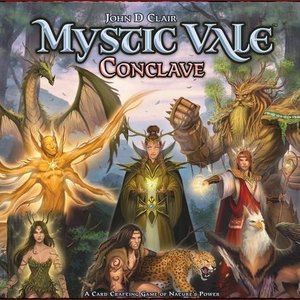
The Journal Science
News and Magazines & Newspapers
App
A Science subscription offers a unique blend of information and community that you can't get...
Purple Phoenix Games (2266 KP) rated Custom Heroes in Tabletop Games
Feb 7, 2022
Custom Heroes is a fantasy/sci-fi-themed, customization, ladder-climbing, trick-taking card game for two to six players. In it players are using their hand of cards to win tricks (a la Tichu). The twist is that each card is able to be upgraded by using various Advancements that are added directly into the same sleeve as the base card. The winner of the game is they who amass 10 or more points and win a subsequent hand.
Before the first game after unboxing, all Character Cards will need to be sleeved. These Character Cards are numbered from 1-10 and come in six sets (one set of 10 cards for each player, at max player count). To setup the game, each player chooses a Player Screen to hide their resources and provide the scoring table. Shuffle the Character cards and deal each player a hand of 10 cards. For this review, I will be using the two-player rules. Players also begin with 1VP Token and 2 Power Tokens, along with an Ascended Form Advancement Card and Kodora Advancement Card. In a two-player game, players begin with three total Advancement Cards, as shown in the photo below. The rest of the VP Tokens and Power Tokens are placed (or thrown, in my case) on the table, and the remainder of the Advancement Cards are shuffled and placed in the bag to be drawn randomly throughout the game. The battle for tricks may now begin!
As with all (most?) trick-taking games, Custom Heroes is played over a series of rounds. However, Custom Heroes is played across three phases: Upkeep, Main, Scoring. During the Upkeep phase, the deck of Character Cards is shuffled and 10 cards are dealt to each player. On each player’s turn during the Main phase, they will decide if they would like to upgrade any card by sleeving Advancement Cards along with the Character Cards. These Advancement Cards are clear plastic and will alter the value of the card, provide special abilities, or provide modifiers to the card’s value. Sleeving new Advancements may be done at any time during the turn, before playing it, but the caveat is that ALL cards are shuffled and dealt to players after every round, so the chances of receiving that same card in future hands diminishes with each additional player at the table!
Once Advancements have been applied, or whilst applying, the players will determine the lead play. A lead could be a single card or several matching cards in a set. The following player will need to play a card, or cards, of the same number, but of higher value. For example, if a single 7 was led, only a single 8, 9, or 10 will beat it. However, if a pair of 5s was led, a pair of 6-10 will beat that lead. Players may pass if they cannot, or choose not to, beat the current trick, and can engage in play on a future trick. Once a player has run out of cards for the hand, or all players have passed. The first player to run out of cards, or the last player to play a card, wins the hand and receives the benefits listed on the scoring table shown below. Again, when a player earns 10 VP and wins a hand, they win!
A few notes about Advancement Cards. The Ascended Form card given to all players at setup will allow the player to win the trick for that round once played. It is essentially a wild insta-win card. That is, unless another player plays an Ascended Form on top of it and wins with the most recent Ascended Form. The Kodora card, however, can be played to the player’s tableau instead of as a card in a trick. When played this way, the player “bets” two VP Tokens that they will win the hand. If they do, they gain an additional two VP Tokens, but lose their bet if they do not finish in 1st Place. All other Advancement Cards may be added to the Character Card sleeve as long as the associated gem icon at the bottom is not already present in the sleeve. As there are four gem slots on Character Cards, each Character may be upgraded four total times.
Components. This one comes with a number of components of different types. The tokens are all small, but not too small, the bag is cool, but obviously the main attractions are the clear plastic cards and sleeves common to the Card Crafting System that AEG produced. I think I first saw this idea of layering plastic cards on top of one another in the Gloom series, though it may have existed even before that. I adore this idea and really fell in love with it when I was big into Mystic Vale, also from John D. Clair and AEG. So components for me get a big ol’ seal of approval. I love ’em.
Similarly, I think the gameplay gets a big seal of approval from me. Like I said, I was big into Mystic Vale for a while, but I think that Cusom Heroes, to me, trumps it in many ways. Though both boxes mention games approximately taking around 45 minutes, I found Mystic Vale to be much longer, mostly due to having to explain and re-explain rules and oddities to players at the table. It feels like Custom Heroes has cut down the complexity of gameplay, especially for newer gamers. I can bring out Custom Heroes and have it taught and played in under an hour – a feat I still haven’t mastered with Mystic Vale.
I think that I also prefer the trick-taking style of Custom Heroes a bit more. My family really enjoys playing Euchre at family reunions and other events, and while Custom Heroes isn’t a Euchre clone at all, the feel is very similar. There is still a led card, and cards that are more valuable to be played atop them in order to win tricks. While there isn’t necessarily any suits in Custom Heroes, the ability to trump an entire hand with an Ascended Form Advancement or other Advancements adds a layer (see what I did there) of strategy and tactics that is just so satisfying. I am a big fan of games that allow players to upgrade their starting resources, or level up their characters, and this one fits right inside a little 60 minute pocket and is relatively easy to teach and play.
All in all, I am so glad I found this one at my FLGS (well, not super local), and there was a big sale going on. I picked it up solely for the Card Crafting System logo and it was a big hit for me. This will completely replace Mystic Vale for me in my collection, and I couldn’t be happier with that. If you are looking for something quick, easy, but full of choices and modifications, this is certainly the game for you. It’s the game for me, and that’s why Purple Phoenix Games gives Custom Heroes a mostly-upgraded 5 / 6. Could this reach into my Top 10 someday, or earn a Golden Feather Award? It is entirely possible. We shall see with more and more plays. I am excited to give it many more plays and find out! Are you in?

Advances in Hospitality and Leisure
Book
Advances in Hospitality and Leisure delivers refreshing insights from a host of scientific studies...

Industry Emergence: Strategic Management and Synchronization for New Industries
Gregory Theyel and Michael Gregory
Book
This book develops a novel industry emergence framework to explain the features, interaction, and...

Humanism and Technology: Opportunities and Challenges: 2016
Book
This book interrogates the ways in which new technological advances impact the thought and practices...

Invention of Integrated Circuits: Untold Important Facts and Impact on Current and Future ICs
Book
This book is the first to give an authoritative and comprehensive account of the invention of...

Tapestry
Tabletop Game
Tapestry is a two-hour civilization game for 1-5 players designed by Jamey Stegmaier. Create the...
Boardgames 2019Boardgames Civilizationgames
Red Otter (340 KP) rated Mystic Vale: Conclave in Tabletop Games
May 30, 2019
Connie (244 KP) rated Pokemon Go in Apps
Jun 26, 2018 (Updated Jul 26, 2018)
That being said, this game was executed extremely poorly. Niantic ignores basic aspects of Pokemon (trading is notable here) in favor of fixes that are needed but not as crucial. Pokemon events around the world are a joke, leading to people paying money for travel or tickets and then leaving them high and dry. It was a great idea, but Niantic was a poor choice for execution. You only had to look at the way they ignored their other game, Ingress, to know it wasn't going to work out.
For a game that had such promise, I am extremely disappointed. Better luck next time.
Science and Technology in Disaster Risk Reduction in Asia: Potentials and Challenges
Rajib Shaw, Koichi Shiwaku and Takako Izumi
Book
Science and Technology in Disaster Risk Reduction in Asia provides both a local and a global...



